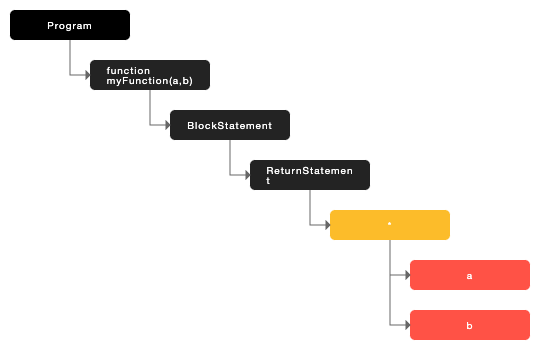

JointJS, a powerful diagramming library, helps developers and companies of any size build advanced visual applications and No-Code/Low-Code tools. It provides a wealth of ready-made demos and a wide range of prebuilt features that make creating applications such as JavaScript Abstract Syntax Tree Visualizer a breeze.
We equip developers with all the plugins they need to save time and focus their energy elsewhere such as:
New to this topic? Learn more about how Abstract Syntax Tree works 👇
Abstract syntax trees are graphical visualizations of source code. One of their uses, as we will discuss later, is in compilers that transform a high-level language into a low-level language.
Let's take a closer look at what the visualization looks like. A simple function a * b would be visually represented using an AST as follows:

We used a specific example above, so you may be wondering why the word "Abstract" has a place in the formal name, right?
As Wikipedia puts it, “the syntax is abstract in the sense that it does not represent every detail appearing in the real syntax, but rather just the structural or content-related details. For instance, grouping parentheses are implicit in the tree structure, so these do not have to be represented as separate nodes. Likewise, a syntactic construct like an if-condition-then statement may be denoted by means of a single node with three branches.”
As mentioned in this article, abstract syntax trees are commonly used in compilers. Their tasks vary from converting human-readable code written in programming languages such as JavaScript, Python, or Java into zeros and ones – something computers understand well – to converting from a modern version of a programming language to an older one.
Although abstract syntax trees are of great importance for programming languages, there is ongoing research into their use in other areas.
Modern development is not about building everything from scratch. The JointJS team equips you with plenty of ready-to-use demo apps that can serve as a boilerplate and radically reduce your development time. Start a free 30-day JointJS+ trial, get the source code of the JavaScript AST Visualizer, and go from zero to a fully functional app in no time.